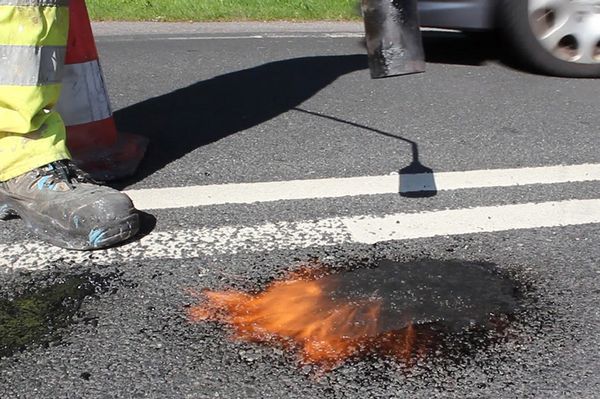There are many factors that affect cold asphalt performance
Roads are subject to constant wear and tear due to the high amount of traffic they are subjected to daily. It is therefore quite common for small potholes and wear and tear to occur as a result of the passage of vehicles.
It is often a difficult and complicated task to have to stop traffic just to repair and carry out minor maintenance work. Cold asphalt is a good option to carry out these small asphalt maintenance tasks.
It is a material that is composed of limestone aggregates together with special asphalt emulsions. Cold asphalt is ideal for repairing small potholes and wear and tear due to time and frequent use of the surface. It is also a perfect product for patching problems in the area around, e.g., sewers, ditches, or manholes.
Cold asphalt also offers several advantages when patching potholes on roads:

Recommendations for cold asphalt
How is cold asphalt applied?
The application of cold asphalt is quick and easy. To begin with, the first thing to do is to remove dirt from the area to be worked on or repaired and clean the immediate area. This cleaning by simply sweeping it is sufficient. After cleaning the area, we apply the product, and in the case of Chipfill we must first heat the area with a gas burner, then we flatten the area we have repaired. If we use chipfill we will have to apply heat again with the burner.
Why clean cold asphalt?
It is important to clean the cold asphalt to ensure that the product bonds well and does not fail. It must be spotless thanks to either a broom or brush, or an air compressor. The area must be free of dust to apply the product and then, once it has been laid, remove any surplus from the repair.
How does cold affect asphalt?
Cold affects asphalt in terms of performance. The surface suffers extra wear and tear, due to the friction of the chains that vehicles carry to be able to drive in snowy conditions. This causes metal to sink into the asphalt mix, deforming the surface.
In addition, there is the usual thermal fatigue that the asphalt already suffers constantly. When the temperature rises or falls, the pavement expands and contracts, affecting the performance of the asphalt.
It should also be noted that to combat the formation of ice on the pavement, it is common to spread sodium chloride on the asphalt. Sodium chloride is a very corrosive element that greatly affects the chemical structure of the asphalt and contributes to the crumbling of the asphalt over time.

Other products for asphalt repair
In addition to cold asphalt, the industry offers a wide variety of materials for fast asphalt repair.
Rollplast is a polymer resin that is suitable for repairing cracks, crevices, or potholes. It is also slip-resistant and can be painted and reopened to traffic in just 40 minutes, which means that the repair does not require major traffic interruptions and the associated problems.
Find everything you need for asphalt repair at T2S Ibérica






